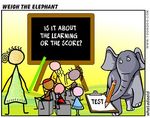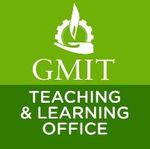Dr Heather Lally Student-centered Learning Module
←
→
Page content transcription
If your browser does not render page correctly, please read the page content below
Student-centered pedagogy: ▪ Stems from constructivist pedagogy, which originates from Piagetian theory (Piaget 1979 in Connell et al. 2016; Piaget 1952 in Mascolo 2009) ▪ Refers to knowledge and skills learned by students over time where they incorporate new ideas into existing knowledge and understanding formed from shared, participatory interactions with their peers during active learning (Kain 2002; Piaget, 1979 in Connell et al. 2016) ▪ Therefore, allows students to develop their own learning and knowledge and develop skills by doing activities that are facilitated by a teacher (Attard et al. 2010; Harden and Crosby 2000; Mascolo 2009; O’Neill and McMahon 2005; Singh 2011)
SCL pedagogy results in increased formative assessment strategies ▪ Formative assessments allow for better monitoring of student progress by the teacher and student, allowing for an increase in knowledge, skills and learning over time (Costine et al. 2012) ▪ Formative feedback promotes development of thoughts, acknowledges the students ongoing progress, encourages hard work and further development, and identifies future steps necessary to attain the required understanding, knowledge and skills (Mascolo, 2009)
▪ Systematic formative assessments and feedback have been shown to improved the learning of science students in third level education (Connell et al., 2016) ▪ Offering teachers the opportunity to modify assessment instructions in response to student mis-understanding (Connell et al. 2016) ▪ Promoting learning for both the student and teacher (Connell et al. 2016) ▪ Popular SCL activities, which also act as formative assessments, include reflective diaries, case studies, portfolios, quizzes, peer/self-assessment and group work e.g. role play, group discussions, debates (Singh, 2011)
▪ Limnology and Oceanography (L&O) is a year 2, semester 2 module on the BSc Applied Freshwater and Marine Biology degree in Galway- Mayo Institute of Technology (GMIT) ▪ Teaching and learning (T&L) strategy combines lectures, practical classes and fieldtrips with student-directed learning (O’Connor et al., 2015) ▪ Summative assessment = 60% continuous assessment & 40% final summative exam ▪ SCL is key to the successful completion of the module ▪ However, would the introduction of formative assessments and feedback increase student engagement and summative marks in the Corrib Catchment Report
To implement formative assessments and feedback into the second year Corrib Catchment Report within the module Limnology and Oceanography To evaluate whether students find the formative feedback useful in preparing for the final report To assess whether summative grades increased due to increased student engagement, knowledge and understanding of the topic
▪ Discussion forums and choice questions were integrated into the module via GMIT VLE Moodle ▪ Discussion forums were anonymised and hidden from other students to reduce fears and social anxiety
▪ Student engagement with formative assessment 1 ‘Water Chemistry Discussion Forum’ ▪ Successful practical class examining differences in water chemistry between two rivers ▪ Detailed class discussion, approximately 20 minutes, took place at the end of the class ▪ Students indicated they understood the linkages between catchment geology and water chemistry ▪ Lecturer developed and issued on Moodle a ‘Water Chemistry Tips and Tricks’ sheet
▪ Detailed personalised feedback was issued to each student by the lecturer to help mitigate their pity falls and to identify areas of improvement for the next formative assessment ▪ Student feedback to the lecturer via the choice question was very poor
▪ Student engagement with formative assessment 2 ‘Macroinvertebrate Discussion Forum’ ▪ Again successful practical class conducting macroinvertebrate biological metrics for water quality and identifying macroinvertebrates ▪ A simplified question was proposed for the discussion forum ▪ Detailed class discussion, approximately 10 minutes, took place at the end of the class ▪ Studentsagain indicated they understood the linkages between macroinvertebrates and water quality
▪ Detailed personalised feedback was issued to each student by the lecturer to help mitigate their pity falls and to identify areas of improvement for the final summative assessment ▪ Students did not engage with the feedback to the lecturer via the choice question
▪ Studentengagement with final summative assessment ‘Corrib Catchment Report’ ▪ Successful field trip and follow-up practical class ▪ Students indicated they understood and were happy with the dataset and were confident of what was required in the report ▪ They requested no changes to the agreed Corrib Catchment Report Rubric
▪ Surprisingly, results show no increase (2%) in grades between 2018/2019 and the previous year 2017/2018, when no formative assessments where employed
▪ Second year students in this instance did not engage with the SCL formative assessment and feedback toolkit (Lecturer, student & peer feedback, 2019) ▪ Predominantly due to “their realisation that it was formative rather than summative” (Peer reviewer, 2019) ▪ No significant change the final marks of the final summative assessment
▪ So were they right to just focus on gaining marks from summative assessments only? ▪ What about the development of deeper understanding on topics or improving general scientific skills such as scientific writing and referencing needed for third year?? ▪ Research indicates that second year students are not well prepared or understand the value of formative assessment nor realise its relevance and worth ▪ Correlates with findings from O’Neill and McMahon (2005) who found SCL formative assessment approaches worked better with third- and fourth-year students who have a deeper understanding of SCL methods and are more willing to embrace formative assessment
▪ The high number of ‘not competent’ scores in the formative feedback assessments did not truly reflect the actual knowledge, skills and understanding students had on the topic ▪ The SCL toolkit had no added value in increasing the summative grades of students ▪ What now?
▪ A greater understanding of how and when SCL formative assessments
are introduced to second year science students (Peer Feedback, 2019)
▪ Which formative assessments act as the best stepping-stones
▪ How best to increase engagement with the SCL toolkit?
▪ For example would including students in the design of the formative
assessments increase participation or would they prefer smaller summative
assessments? (Peer Feedback, 2019)
▪ Change the schedule and delivery of the course allowing formative and
summative assessments to occur continuously with no breaks (Peer Feedback,
2019)
Evaluation and recommendations from this research will feed forward
into updating the SCL toolkit for academic years 2019/2020▪ Attard, A., Di Ioio, E., Geven, K and Santa, R. (2010). Student Centered Learning. An Insight into Theory and Practice. Bucharest: Partos Timisoara. ▪ Connell, G. L., Donovan, D. A. and Chambers, T. G. (2016). Increasing the Use of Student-Centered Pedagogies from Moderate to High Improves Student Learning and Attitudes about Biology. CBE Life Science Education, 15, 1-15. http://doi.org/10.1187/cbe.15-03-0062 ▪ Costine, P., Marron, S. and Costine, J. (2012). Professional Practice in Training and Development: An Essential Guide. Kildare, Ireland: Irish Institute of Training and Development. ▪ Harden, R. M. and Crosby, J. (2000). Amee Guide No. 20: The Good Teacher is More Than a Lecturer- The Twelve Roles of the Teacher. Medical Teacher, 22(4), 255-275. http://doi.org/146 6-187/00/04033 ▪ Kain, D. K. (2002). Teacher-Centered verus Student-Centered: Balancing Constraints and Theory in the Composition Classroom. Pedagogy, 3, 104-108. ▪ Mascolo, M. F. (2009). Beyond Student-Centered and Teacher-Centered Pedagogy: Teaching and Learning as Guided Participation. Pedagogy and the Human Sciences, 1(1), 1-25. ▪ O’Connor, I., Brophy, D., Lennon, S., Nash, R. and Lally, H. (2015). Module Documentation for Limnology and Oceanography (AQUA06002). Academic Module Manage for Galway Mayo Institute of Technology. ▪ O’Dwyer, K. (2019). Peer Reviewer Comments. ▪ O’Neill, G. and McMahon, T. (2005). Student-Centered Learning: What Does It Mean For Students and Lecturers? In: G. O’Neill, G. Moore and B. McMullin (Eds.), Emerging Issues in the Practice of University Learning and Teaching. Dublin: AISHE. ▪ Singh, N. (2011). Student-centered Learning (SCL) in Classrooms – A Comprehensive Review. Educational Quest, 2(2), 275-282.
You can also read






















































